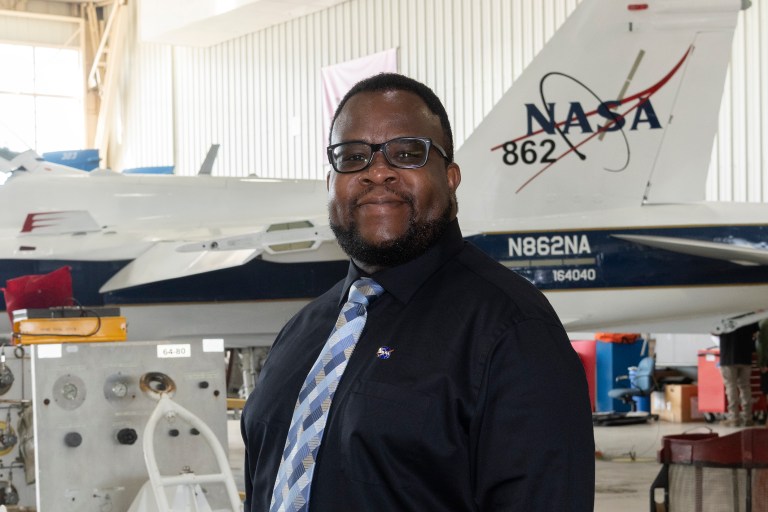
Larry J. Cliatt II
NASA Armstrong Aerospace Engineer
Contents
Larry J. Cliatt II is an aerospace engineer and sub-project manager in the Aerodynamics and Propulsion branch at NASA’s Armstrong Flight Research Center in Edwards, California. Appointed in 2023, he manages the acoustic validation phase of NASA’s Quesst mission, which is when the sonic thump of the X-59 will be measured to validate the prediction tools used to build the quiet supersonic flight research aircraft.
Experience
As a principal investigator, Cliatt led several NASA sonic boom flight research efforts, including the Farfield Investigation of No-boom Thresholds (FaINT), Waveforms and Sonicboom Perception and Response (WSPR), and Quiet Supersonic Flights 2018 (QSF18) projects.
Cliatt’s career with NASA began as a cooperative engineering student in 2006 at Armstrong. That year, he also interned at Bell Helicopter as a flight test engineer. In 2007, he was hired as a full-time aerospace engineer at Armstrong and since then, has specialized in sonic boom flight research and high-speed aerodynamics.
Cliatt is a graduate of NASA FIRST (Foundations of Influence, Relationships, Success, and Teamwork), an esteemed agency leadership development program. Among his many honors are a NASA Early Career Achievement Medal in 2012 and NASA Group Achievement awards for the Schlieren Project Team in 2016, the Sonic Boom Team in 2012, and the Stratospheric Observatory for Infrared Astronomy (SOFIA) Initial Science Flight Team in 2011. He also received an Award for Academic Excellence from the Office of Minority Educational Development at Georgia Institute of Technology in 2003 and is a long-standing member of the National Society of Black Engineers.
Cliatt has authored or co-authored several papers about aircraft shock-wave measurement, most recently “Lessons Learned from Sonic Boom Flight Research Projects Conducted by NASA Armstrong Flight Research Center” in 2020, “Mach Cutoff Analysis and Results from NASA’s Farfield Investigation of No-boom Thresholds” in 2016, and “Finding the Boom: Phased Array Processing Applied to Sonic Boom Direction of Arrival Estimation” in 2016.
Education
Cliatt earned a Bachelor of Science and a Master of Science in aerospace engineering from the Georgia Institute of Technology, Atlanta, in 2004 and 2007, respectively.

























